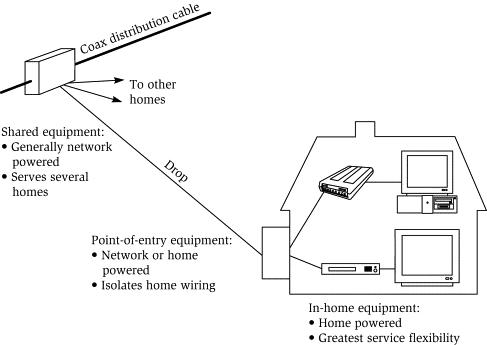Detailed explanation
Terminal, namely computer display terminal, is the input and output device of computer system. The computer display terminal is produced with the centralized processing mode of the mainframe era, and continues to develop with the development of computing technology. So far, computing technology has experienced three development periods: the host era, the PC era, and the network computing era. The terminal is adapted to the three stages of computing technology development, and the application has also experienced the three stages of character dumb terminals, graphic terminals and network terminals. Form.
Terminal equipment is divided into two types: general-purpose and special-purpose. General-purpose terminal equipment refers to general-purpose computer input and output devices with communication processing and control functions. The type and quantity of configuration depends on needs. The input and output devices that can usually be selected are: keyboard, card reader, paper tape reader, optical character or mark recognition machine, voice recognizer, serial or line printer, display, card punching machine, paper tape punching Machines, voice synthesizers, floppy disk drives, tape drives, disk drives, etc. General-purpose terminal equipment is roughly divided into two types: remote batch processing terminal and interactive terminal according to the variety and quantity of configuration.
Classification
Terminal classification: Common client devices are divided into two categories: one is a thick client and the other is a thin client. Then, the devices based on the open industry standard architecture and more powerful functions represented by the PC are called "fat clients", and the others are classified as "thin clients." The space and scale of the thin client industry is also very large, no less than the scale of the PC.

1. From a technical perspective, the data processing mode will be decentralized to centralized, the user interface will be more user-friendly, manageability and security will be greatly improved; at the same time, communication and information processing methods will also be fully networked, and can achieve unprecedented System scalability and cross-platform capabilities.
2. In terms of application form, network terminal equipment will not be limited to the traditional desktop application environment. With the diversification of connection methods, it can be used as a desktop device, and it can also be used in mobile and portable ways. There will be diversified terminal devices. Product form: In addition, with the expansion of cross-platform capabilities, in order to meet the needs of different system applications, network terminal devices will also appear in many faces: Unix terminals, Windows terminals, Linux terminals, Web terminals, Java terminals, and so on.
3. In terms of application areas, terminal devices in the era of character dumb terminals and graphic terminals can only be used in window service industries and counter services will be gone forever, and non-counter services such as online banking, online securities, and bank low-counter services will be extensive Adopt network terminal equipment, and the application field of network terminal equipment will also rapidly expand to emerging non-financial industries such as telecommunications, electricity, taxation, education, and government.
In VoIP, the terminal equipment is a general telephone.
Remote terminal
Enable users far away from the computer to perform batch input and output operations on the remote computer. The simplest structure of this terminal consists of a printer, a card reader and its communication control processor. In fact, the remote batch processing terminal equipment has the function of a mini or small general-purpose computer in a large-scale computer system. Since the information in the communication line is transmitted in a serial manner, the communication control processor in the terminal device needs to convert the information input to the computer from parallel to serial and send it to the communication line, and send the information from the communication line The output is changed from serial to parallel; in addition, it is necessary to monitor the processing of information transmission and error correction according to the prescribed communication procedures.
Interactive
Also known as a conversational terminal, it enables the user and the computer system to perform data processing operations in the manner of human-computer interaction or conversation. The simplest interactive terminal used electromechanical keyboard printing terminal in the early days. By pressing the keys marked with characters on the keyboard by hand, electrical signals with corresponding character codes can be generated, input to the computer, and printed out on the printer paper. Characters: The character code signal output by the computer is also printed on paper by the printer as characters. When there is no need to record and save the results of man-machine conversations, a picture tube is used instead of a typewriter to display character information, that is, an electronic keyboard character display terminal is used. In order to make the picture tube display without flicker, a display memory and a read-only memory for the font generator must be installed in the terminal. In addition, a display logic processing controller must be set up to control the electron beam in the picture tube according to the timing and synchronization of the TV raster scan. The required character picture format is displayed on the phosphor screen. Since the display memory can be used to store and display the typed and output character information at the same time, the keyed positioning cursor can also be used to locate, modify, move up, down, left, and right, and edit the displayed information content.
On the basis of the keyboard character display terminal, new multifunctional terminals such as Chinese character display terminal, graphic display terminal and color image display terminal have been successfully developed.
Network terminal equipment
Network terminal equipment (Network terminal) is a kind of terminal equipment dedicated to the network computing environment. Compared with PCs, there are no storage devices such as hard disks, floppy drives, optical drives, etc. It obtains resources through the network, and application software and data are also stored on the server. For example, mobile phones, computers, and other devices you use are called terminal devices.
